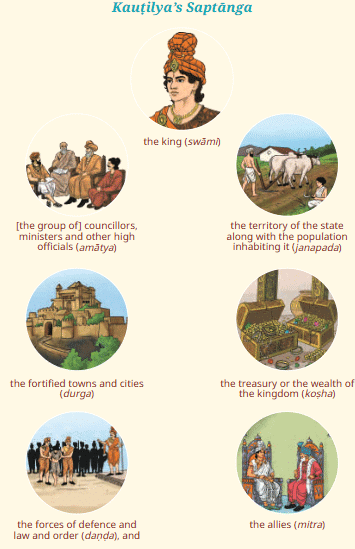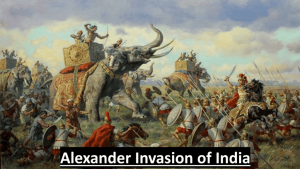LAQ for Chapter 5 The Rise of Empires Class 7 Social Science NCERT
Important Questions1
Q1: How did trade routes contribute to the growth of empires like the Mauryas?
Answer
• Trade routes connected distant regions, allowing goods, ideas, and culture to move freely.• The Maurya Empire controlled key trade routes like Uttarapatha and Dakṣiṇapatha, increasing wealth through taxes on trade.
• This economic prosperity helped fund the army and infrastructure, enabling the empire to grow and maintain power.
• Trade also fostered cultural exchange, enriching the empire’s society.
LAQ
2
Q2: Explain the role of warfare in the expansion of empires.
Answer
• Warfare was a primary tool for expansion in ancient empires.• Empires like the Mauryas used their armies, including elephants and iron weapons, to conquer smaller kingdoms.
• Conquering new lands provided more resources, including wealth, land, and manpower.
• However, the desire for control over trade routes and strategic locations also motivated warfare, often resulting in the incorporation of diverse cultures and territories.
LAQ
3
Q3: What was the importance of the Saptanga concept in governance according to Kauṭilya?
Answer
• The Saptanga concept, described by Kautilya in his Arthashastra, divides the state into seven parts: the king, ministers, territory, cities, army, treasury, and allies.
• These components worked together to ensure the kingdom’s prosperity and stability.
• The king’s leadership, supported by efficient administration and a strong army, was crucial for the protection and growth of the empire.
• The system helped in managing resources and dealing with external threats.
Kautilya's Saptanga
LAQ
4
Q4: How did Aśhoka’s policies reflect his commitment to peace and governance?
Answer
• Aśhoka’s policies after the Kalinga War showed his transformation into a proponent of peace and non-violence.• He embraced Buddhism and promoted moral governance through his edicts, encouraging kindness, tolerance, and welfare for all.
• His edicts called for respect toward all religions and the fair treatment of citizens.
• Aśhoka’s reforms, such as healthcare for people and animals, planted trees along roads, and promoted education, reflected his deep concern for the well-being of his empire.
LAQ
5
Q5: How did the Maurya Empire ensure social and economic welfare?
Answer
• The Maurya Empire focused on both social welfare and economic stability.• Farmers were protected during wars, ensuring food production continued.
• The Mauryas also introduced a strong taxation system to fund public works, maintain the army, and promote trade.
• Artisans and merchants played a key role in the economy, and cities had markets, public buildings, and services like fire protection and water supply.
• The empire's governance model ensured the stability of both the economy and society.
LAQ
6
Q6: Discuss the impact of Alexander’s invasion on India.
Answer
• Alexander’s invasion in 327-325 BCE had a limited long-term political impact but led to significant cultural exchanges.• While Alexander defeated King Porus, he was unable to move further into India due to his soldiers' reluctance.
• Greek influence spread, especially in art, philosophy, and governance.
• His brief rule left satraps (governors) in control of northwest India, which later contributed to Indo-Greek cultural interactions and the spread of Hellenistic ideas.

LAQ
7
Q7: What were the main challenges faced by empires like the Mauryas after the death of strong rulers like Aśhoka?
Answer
• After Aśhoka’s death, the Maurya Empire faced internal conflicts, weak rulers, and loss of control over distant regions.• The lack of strong leadership and central authority led to revolts and the gradual fragmentation of the empire.
• Smaller kingdoms gained independence, and the empire’s unity weakened.
• The vast size of the empire also made it difficult to control, leading to a breakdown in the administration and defense, which contributed to its decline.
LAQ
8
Q8: How did the development of art and architecture during the Mauryan period influence later Indian culture?
Answer
• Mauryan art and architecture laid the foundation for later cultural developments.• The construction of stūpas, pillars, and edicts under Aśhoka’s rule set standards for architectural design and Buddhist symbolism.
• The Sarnath pillar, with its four lions, became India’s national emblem.
• These artistic traditions continued to influence Indian architecture in subsequent empires.
• The Mauryan period’s cultural achievements remain a lasting legacy in India’s art history.
LAQ